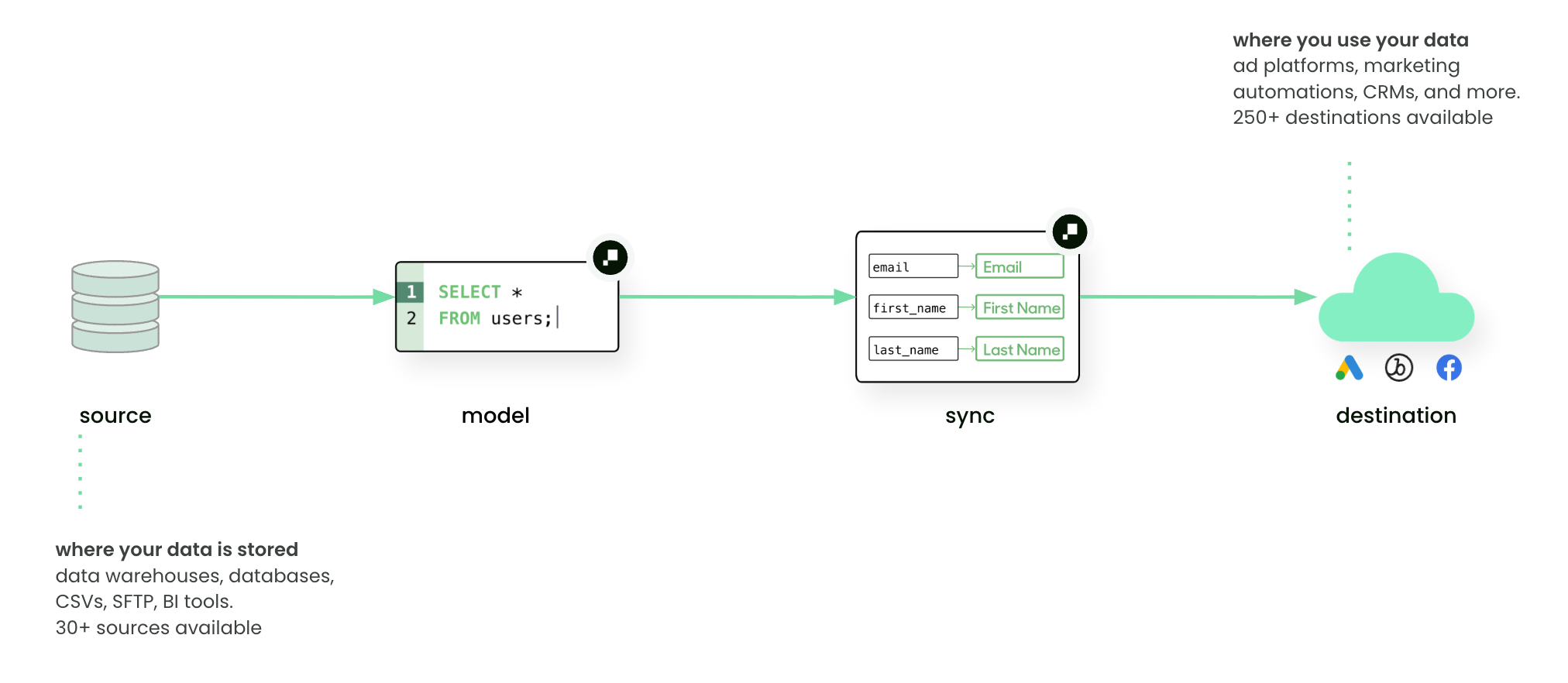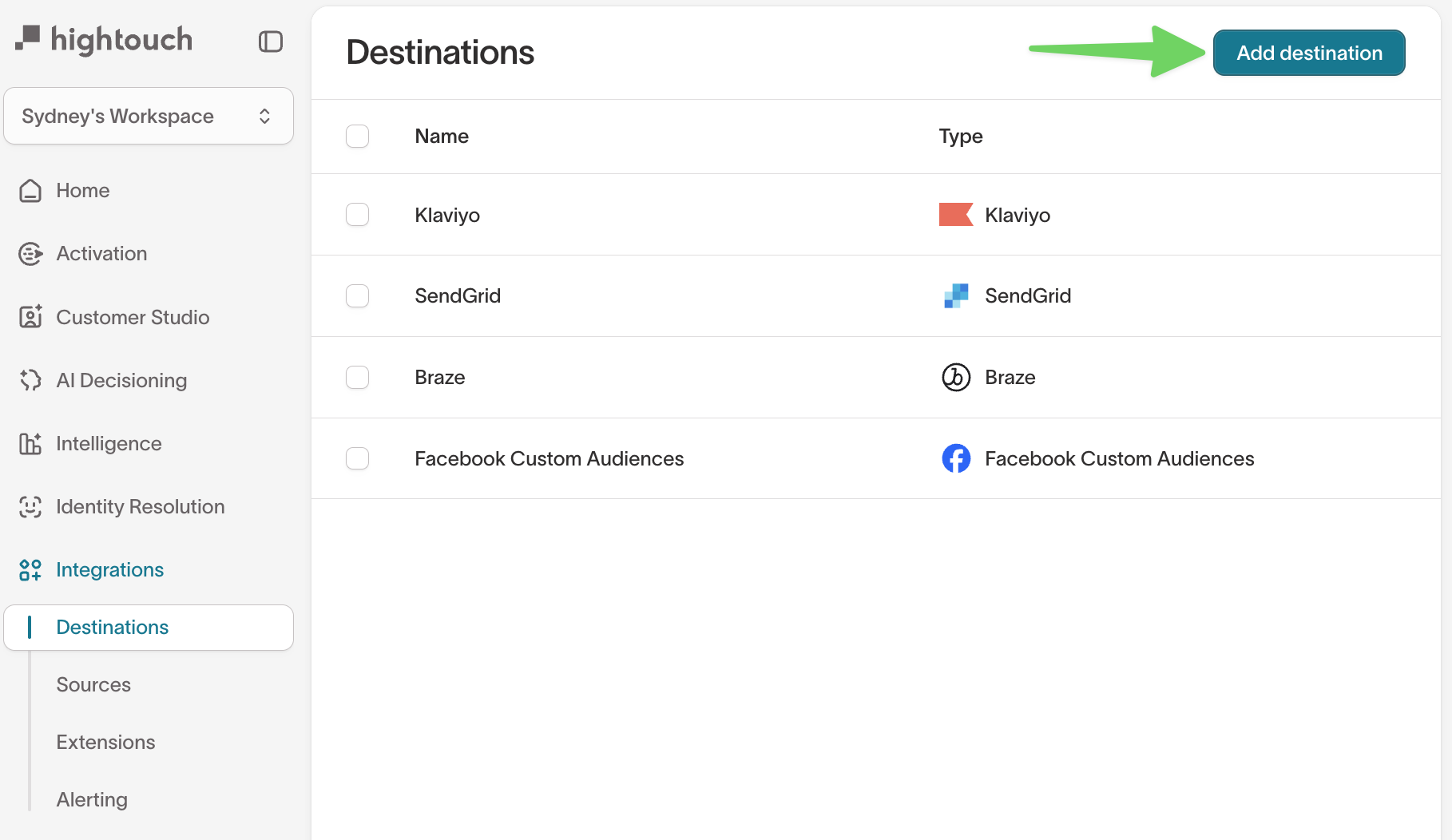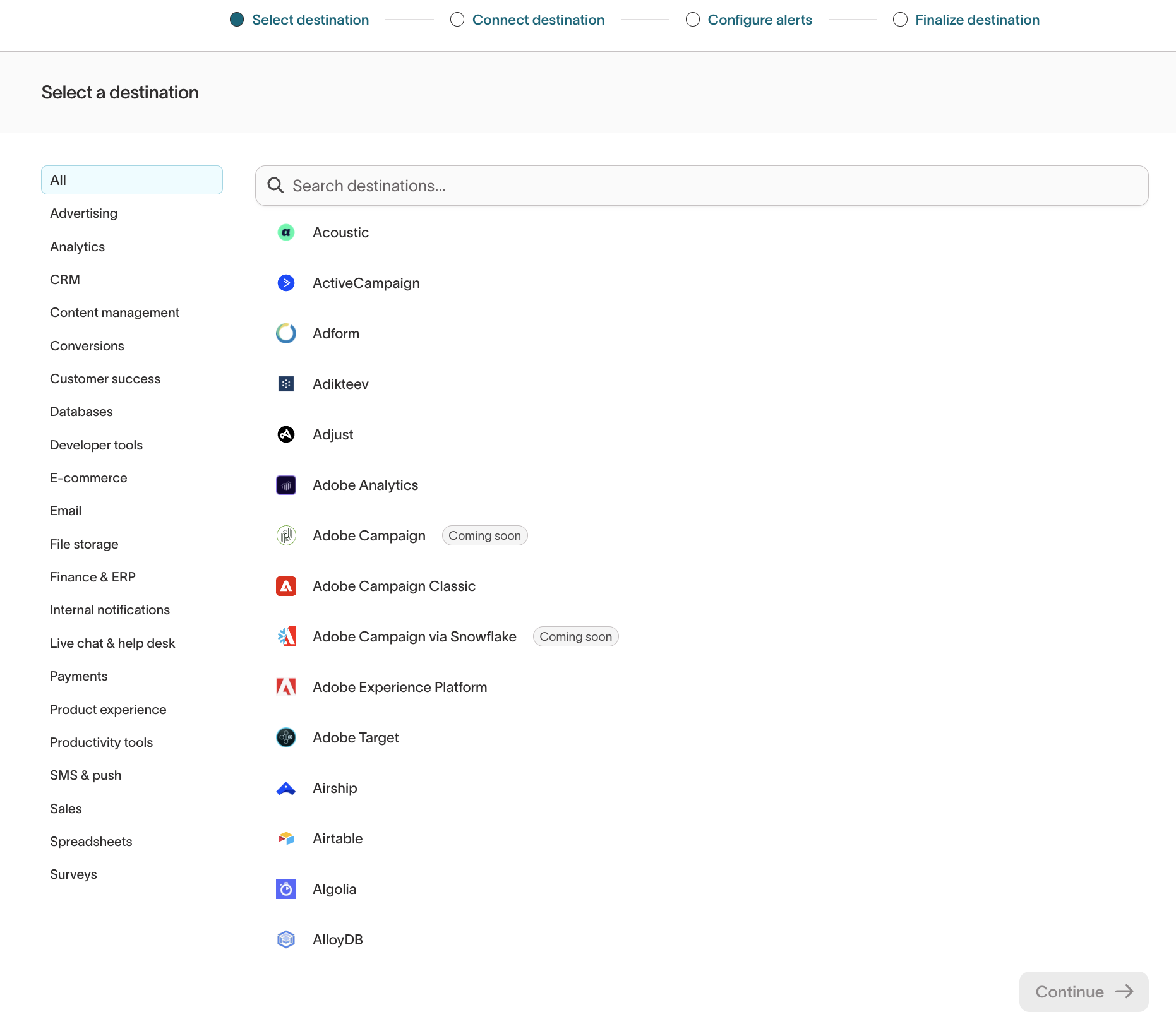A destination is any system where teams consume activated data.
Common examples include:
- CRMs (Salesforce, HubSpot)
- Marketing platforms (Braze, Iterable, Marketo)
- Ad platforms (Meta Ads, Google Ads, LinkedIn)
- Support tools (Zendesk, Intercom)
- Analytics platforms (Amplitude, Mixpanel)
- Custom APIs (via Webhook/HTTP Request destinations)

Destinations are the endpoint of Hightouch’s Reverse ETL pipeline. Once a model is defined, you can configure one or more syncs to deliver data into destinations.
For marketers: a destination is the tool where you build campaigns, measure results, or engage with customers—like an ads platform, email tool, or CRM.
Add a destination
To create a new destination:
- Go to Integrations → Destinations.

- Click Add destination.

You’ll be prompted to choose from supported destination types and configure:
- Authentication (OAuth, API key, service account, etc.)
- Object type (e.g. user, event, list, custom object)
- Sync type supported by that destination (upsert, insert, update, event streaming, etc.)
Each destination has unique configuration options. See catalog and refer to integration-specific documentation for setup details and supported sync types.
Security and data handling
Hightouch writes data into destinations using secure APIs:
- All outbound traffic is encrypted via TLS 1.2+
- Data is batched and delivered according to the sync configuration (mode, type, mapping)
- Sensitive fields can be masked or excluded before syncing to destinations
See Security and compliance overview → for more details.
How destinations fit into data activation
- Data teams: configure destinations and map model columns to the correct destination fields.
- Marketers: access fresh, trusted data directly in the tools where they run campaigns or measure results.
Example:
- Model: SQL query for “users who abandoned checkout”
- Destination: Braze (Email + Push)
- Sync: upsert new/changed users nightly, send them into a “Cart Abandonment” campaign
Next steps
- Add your first destination →
- Learn about Syncs → and how they deliver data into destinations